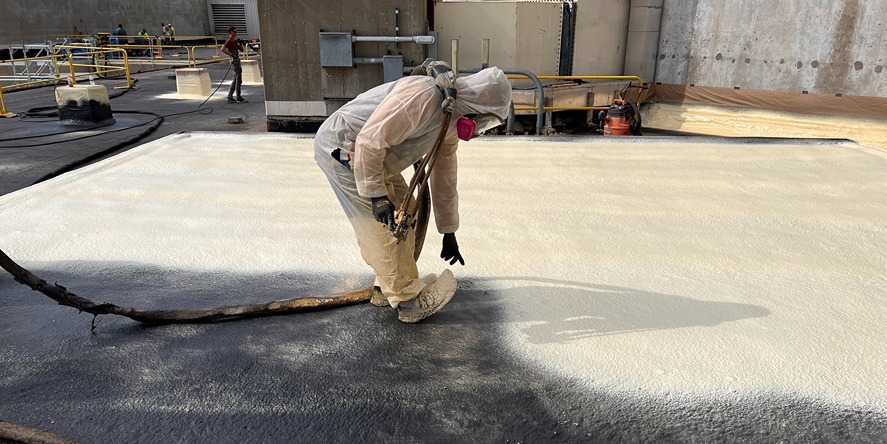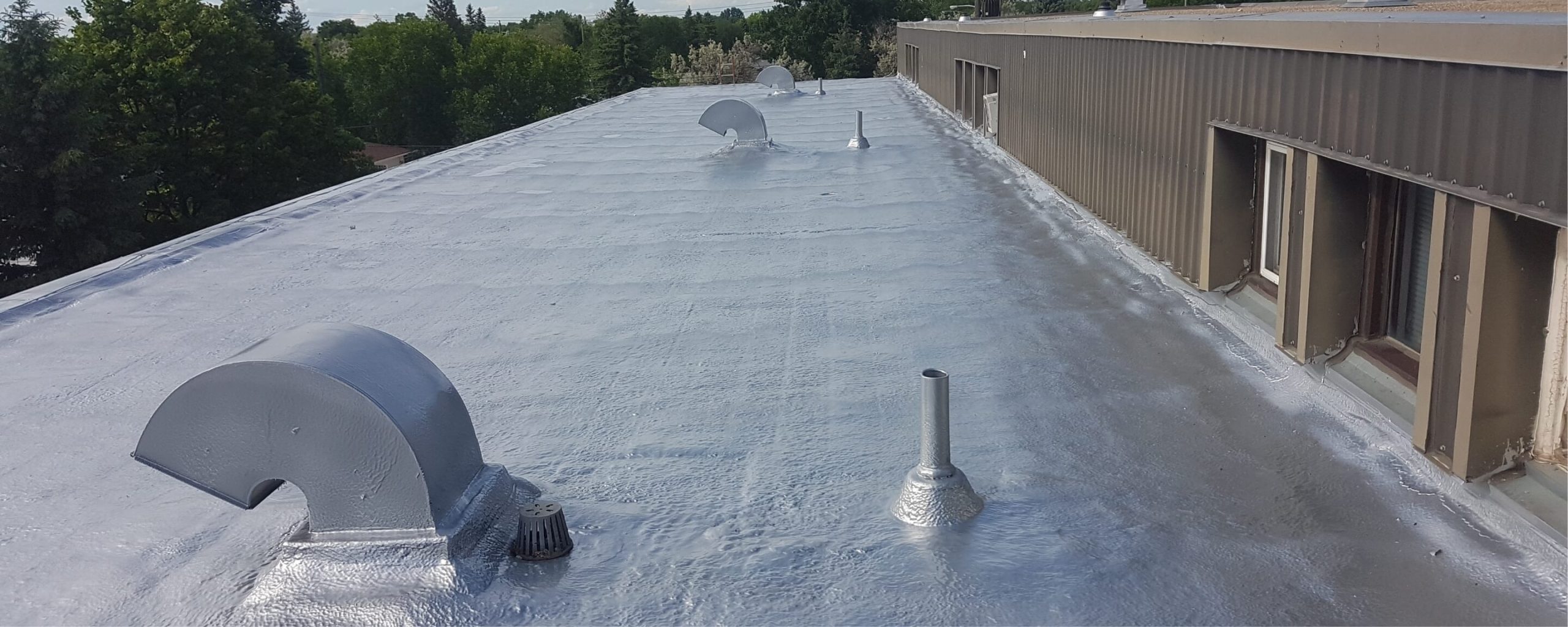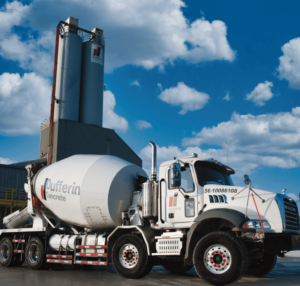Why Spray Foam Roofing Is Ideal for Rainy Season

Spray foam roofing is exceptionally well-suited for rainy season conditions due to its seamless, waterproof membrane that seals rooftops against water infiltration. Unlike traditional roofing systems that rely on overlapping layers and seams, spray foam (SPF) creates a continuous, monolithic barrier that eliminates common weak points where leaks typically occur.
Its closed-cell structure prevents moisture penetration, provides thermal insulation, and resists ponding water—making it a reliable option during heavy rainfall. This article provides a detailed look at why spray foam roofing performs better than conventional materials in wet weather, backed by data, comparisons, and technical specifications.

Key Benefits of Spray Foam Roofing in Rainy Conditions
Seamless Waterproof Protection
Spray foam roofing eliminates joints, seams, and fasteners that can deteriorate or leak under consistent rain. This single-layer application provides superior waterproofing without needing additional layers.
Resistance to Ponding Water
SPF roofs maintain their structural integrity even when exposed to standing water for extended periods. The slope can also be corrected during installation to enhance drainage.
Adheres to All Surfaces
Spray foam bonds tightly to existing substrates, including metal, concrete, and asphalt-based materials, forming a watertight seal that’s resistant to wind-driven rain.
Performance Comparison with Other Roofing Systems
| Feature | Spray Foam Roofing (SPF) | Modified Bitumen | EPDM Rubber Roofing | TPO Roofing |
| Seamless Application | Yes | No | No | No |
| Waterproofing Performance | Excellent | Moderate | Moderate | Good |
| Ponding Water Resistance | High | Low | Low | Moderate |
| Adherence to Surface | Direct Bonding | Requires Fasteners | Requires Adhesive | Heat-Welded |
| Lifespan with Maintenance | 20–30 Years | 10–15 Years | 10–15 Years | 15–20 Years |
| Thermal Resistance (R-value) | R-6.5 per inch | R-1.2 per inch (avg) | R-3 per inch (avg) | R-3.3 per inch (avg) |
| Leak Potential Over Time | Low | High | Moderate | Moderate |
Bonus Tip: For areas prone to high humidity and rainfall, combining SPF roofing with reflective coatings can reduce internal moisture and prevent thermal bridging.
Technical Specifications of Spray Foam Roofing
| Property | Value/Description |
| Type | Closed-cell polyurethane foam |
| Applied Thickness | Typically 1.5 to 3 inches |
| Compressive Strength | 40–60 psi |
| Water Absorption | Less than 1% |
| R-value | 6.5 per inch (varies by product) |
| Adhesion Strength | > 40 psi on most substrates |
| Curing Time | Tack-free in ~1 minute, full cure in 24 hours |
| UV Protection | Requires elastomeric topcoat |
| Flame Resistance | Class A (with approved coating) |

How Spray Foam Performs During Heavy Rainfall
Maintains Structural Seal Under Pressure
Because the foam expands during installation, it fills cracks, gaps, and surface imperfections. Once cured, it remains impermeable even when saturated by heavy, continuous rain.
Prevents Capillary Action and Wicking
SPF’s closed-cell matrix stops water from seeping through capillary channels—common in traditional roofing systems with fibrous or layered materials.
Bonus Tip:
Ensure installation is done under dry weather conditions. Moisture during application can affect adhesion and long-term waterproofing.
Energy Efficiency During Rainy Seasons
Rainy seasons often come with cooler outdoor temperatures and higher humidity. Spray foam provides a dual benefit during this time:
- Moisture Barrier: Prevents humidity from entering indoor spaces.
- Thermal Insulation: Reduces heating costs by retaining internal heat.
This is especially useful in subtropical climates where rainy seasons increase humidity while still requiring indoor temperature control.
Common Market Insights
According to a 2023 industry report from IBISWorld, spray foam roofing demand in coastal and flood-prone regions has grown 15% year-over-year, driven by its high performance during monsoon and hurricane seasons.
A related 2024 survey by Roofing Contractor Magazine found that 78% of commercial building managers consider water resistance the top factor for roofing selection in wet climates.
Things to Consider Before Making a Decision
Before choosing spray foam roofing for rainy season protection, evaluate the following:
- Roof Structure and Load: Ensure the roof can support added foam thickness without requiring structural reinforcement.
- Installation Weather Window: SPF must be applied in dry conditions. Plan installation during dry periods before rainy seasons.
- Existing Roof Condition: Spray foam is ideal for retrofits, but the existing roof must be stable and clean.
- Required Permits: Some areas have regulations for foam roofing and require inspection or certification.
- UV Coating Requirement: To protect against UV degradation, an elastomeric topcoat must be applied over the foam.
Bonus Tip: Consult your local building codes to verify allowable foam thickness and topcoat types for optimal performance and compliance.
Common Questions
Can spray foam be installed during the rainy season?
No. Spray foam requires a dry surface for proper adhesion and curing. Installers must wait for clear weather windows.
Does spray foam trap moisture inside the roof?
No. Its closed-cell structure resists water infiltration and does not allow water vapor to pass through. Proper ventilation is still essential in building design.
How long does spray foam roofing last in wet climates?
With proper maintenance and re-coating every 10–15 years, SPF roofs can last 30 years or longer, even under consistent rain exposure.
Is spray foam effective on sloped roofs?
Yes. While often used on flat roofs, SPF works on sloped and irregular surfaces due to its self-adhering and expanding properties.
Spray Foam Roofing FAQ
What makes spray foam roofing ideal for wet weather?
Its seamless and waterproof design prevents leaks and water damage, making it highly effective in rainy climates.
Can I apply spray foam over my existing roof?
Yes, in most cases. As long as the base roof is stable and clean, SPF can be applied directly without full tear-off.
How much maintenance does it require?
Minimal. Routine inspections and recoating every 10–15 years maintain optimal performance.
Is spray foam eco-friendly?
SPF reduces energy usage due to high insulation performance. However, some formulations may contain chemicals requiring responsible handling.
Does it increase energy efficiency during rainy seasons?
Yes. Its insulating properties help maintain indoor temperatures and prevent moisture-related cooling or heating losses.
Make the Right Decision
Spray foam roofing offers reliable, long-term protection against rain-related roof issues. Its ability to form a monolithic, waterproof barrier gives it a performance edge over conventional roofing systems during rainy seasons.
Evaluate your roof structure, regional climate, and timing needs before proceeding. When applied correctly and maintained, spray foam roofing delivers outstanding value and protection in wet weather conditions.









